Matthieu Larivée – Embracive Light
Posted on December 6, 2022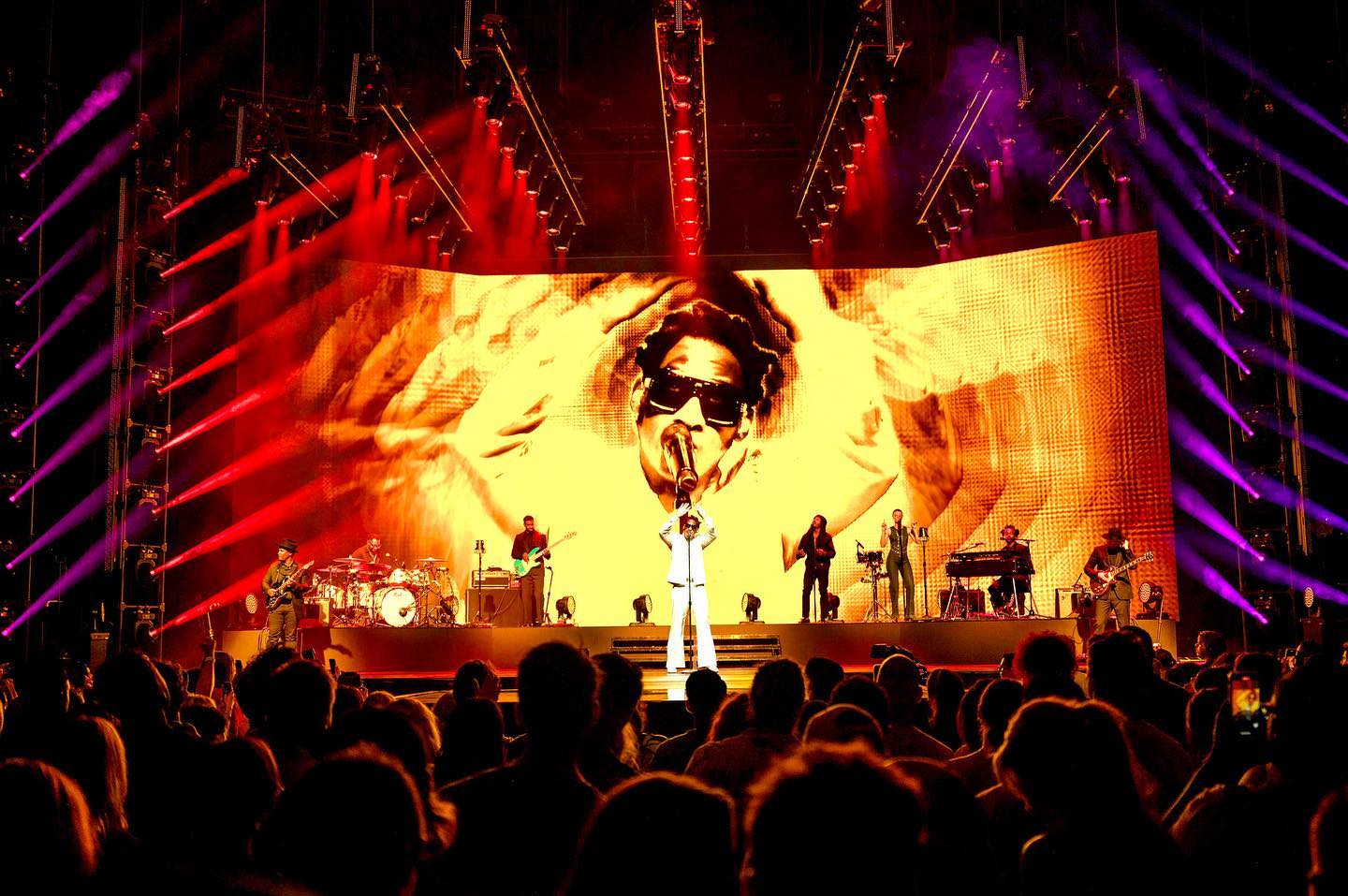
Not too long ago, when someone asked this Montreal-based creative what his profession was, his response was simple: “Lighting Designer.” However, like his work itself, the answer to this question has become ever-more expansive of late, beginning with “production designer,” and on to “content creator,” until now, he simply described himself to us as “a generalist.”
It is an apt term, given the all-embracive designs that Matthieu Larivée and his team at Lüz Studio have done on major TV broadcasts, as well as for clients like Jason Aldean, Leon Bridges, Jack White, Billy Idol, Panic at the Disco, Cirque du Soleil Amaluna’s, Wintuk, and Chantal Chamandy’s PBS concert at the Egyptian Pyramids.
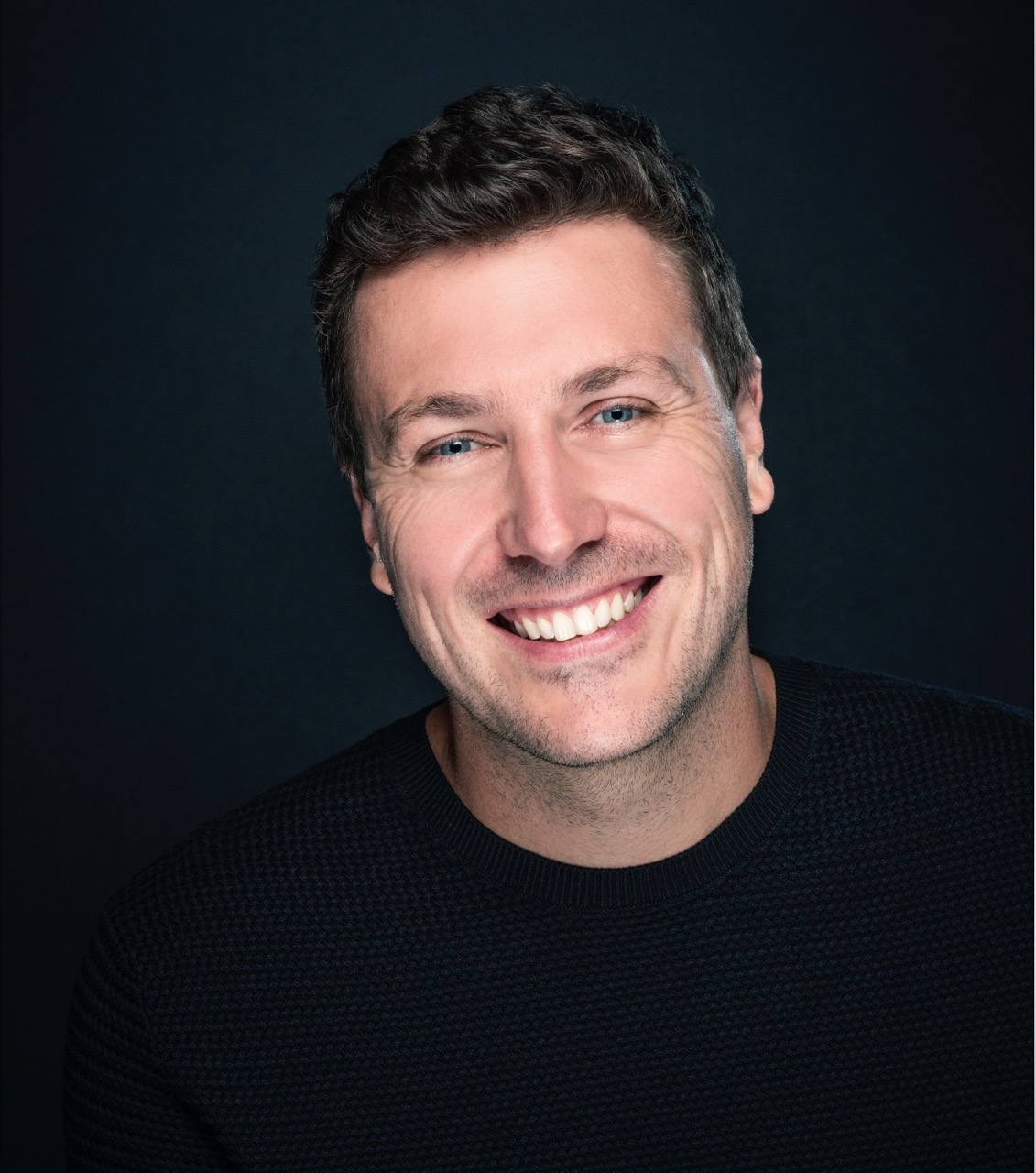 In the hands of Larivée and his colleagues, lighting, video, and other design elements are joined together, almost to the point where the lines separating them disappear. In the process, however, they reemerge as part of a bigger, bolder, and more immersive holistic creation that extends and redefines space on stage as it supports the artist.
In the hands of Larivée and his colleagues, lighting, video, and other design elements are joined together, almost to the point where the lines separating them disappear. In the process, however, they reemerge as part of a bigger, bolder, and more immersive holistic creation that extends and redefines space on stage as it supports the artist.
Traditional identities are readily shed in this union. So, IMAG video is no longer simply a way to show the performer on stage to fans in distant seats; instead, it is now woven into the overall scenography with its background adjusted to enhance the connection between artist and audience. Under Larivée’s holistic philosophy, there is no reason to be content with merely making lighting and video work closely together. Why should there be? When the two are merged more intensely by doing things like having light shine through a scenic blow-through wall, the design takes on a greater, more transformative personality.
Larivée has been at the forefront in embracing new technologies like Augmented Reality (AR) and Artificial Intelligence (AI) when pushing boundaries with his design concepts. By sharing his understanding of these tools, he not only gave us a deeper appreciation of his work, he also provided us with an inspired vision of the future.
A thing that always impresses us is how you overlay one virtual image over another on your video screens the way you did on the Leon Bridges Boundless Tour when you had a virtual curtain come down on the screen and then had other images come over it. Or when you had multiple images of the singer overlap. How would you say these layered effects contribute to the audience experience?
“My design approach is simple: I’m trying to define the space we’re in. Sometimes with lighting and set pieces but more often with a video screen because it’s more flexible. I’m creating set extension within the screen so we’re losing the feeling of the screen. So, for the audience, we’re getting into the world of the song and it’s not getting too busy with crazy graphics. It’s a scenic approach more than a video approach and because I’m also a lighting designer, I can make sure that those set extensions are lit like the rest of the stage. “
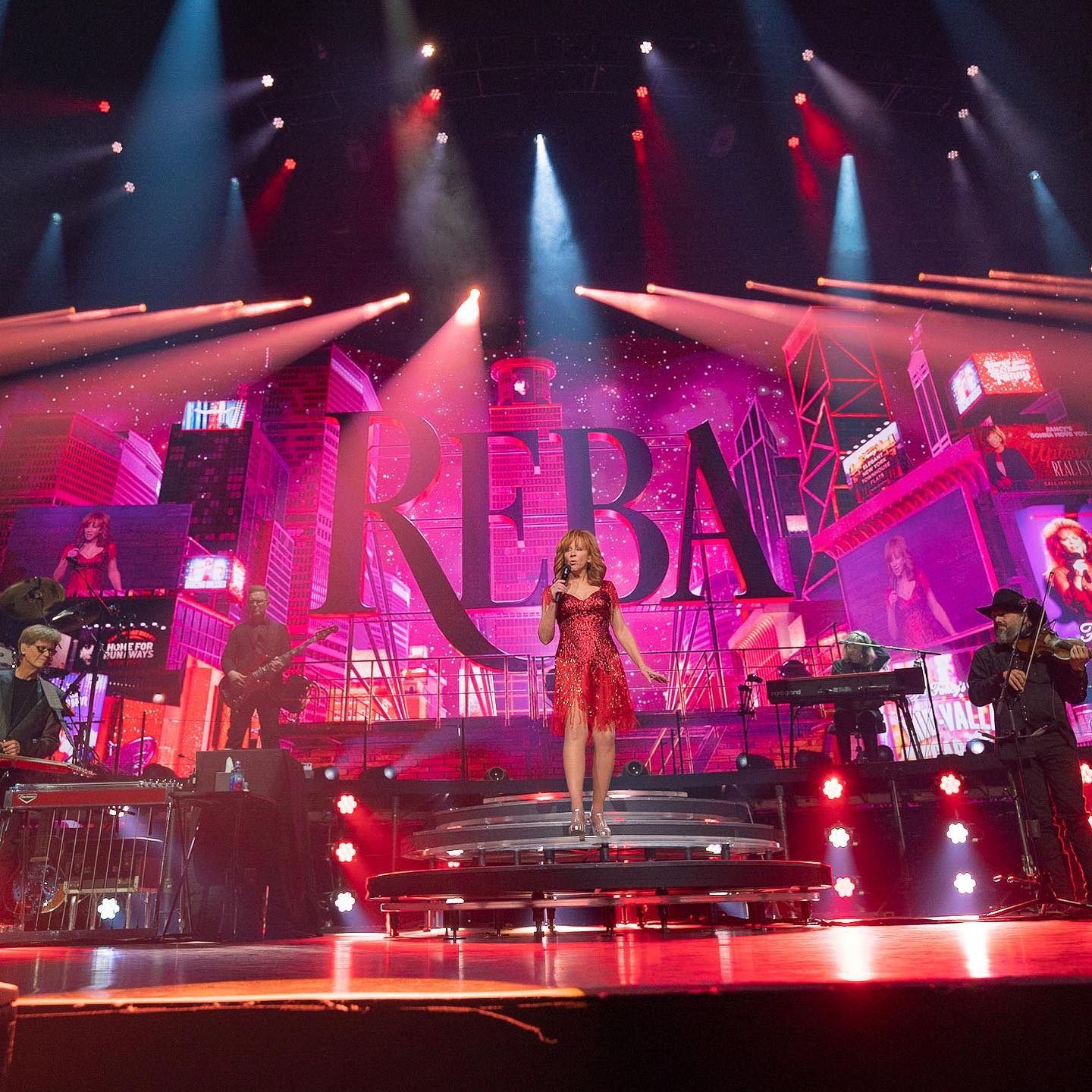
You also use AI often as you did with Leon Bridges and Jason Aldean so you can show the artist on stage in different positions on the video screen than he or she is actually in on the stage. How do you decide when to do this in a show and why do you do it?
“The AI is not the computer-generated images but the live tracking of the cameras with no kinetic device. This is kind of new for us because the technology just got there. In our daily life it is used every day (FaceTime, zoom calls, etc.), so, it’s a tool that helps focus on the performance of the artist because we can lose the background. IMAG for me is not a plan B to content, it has to be an important part of the show and because of that AI tool, we can now merge IMAG and content together in a better way. “
Speaking of merging; it seems that by adding depth to the stage and making it possible to incorporate a much wider range of images into the scenography, your designs are able to add a much greater theatrical element to shows. Do you think concerts in general will become more theatrical?
“There’s a wide selection of nice designs on the market. I’m not sure that there’s a theatrical trend. I think that the designs are way more refined and more in synch with the artists’ aesthetics nowadays. Video designers are more and more working with LDs to create immersive looks and LDs have tools to create a rich variety of looks because of the great equipment available. Today’s graphic lighting tools, such as LED bars, and pixels create a language that the audience connects to. It’s less vague than a spot and a wash bathing a stage.”
Would it be possible to create the same kind of immersive effects you’re creating without a blow-through video wall?
“The blow through products check all the boxes, they’re light, transparent if needed and offer a great resolution. Creating depth of field can be done differently of course with scrim or a multi shaped LED wall. It really depends on what you want to put on the screen.”
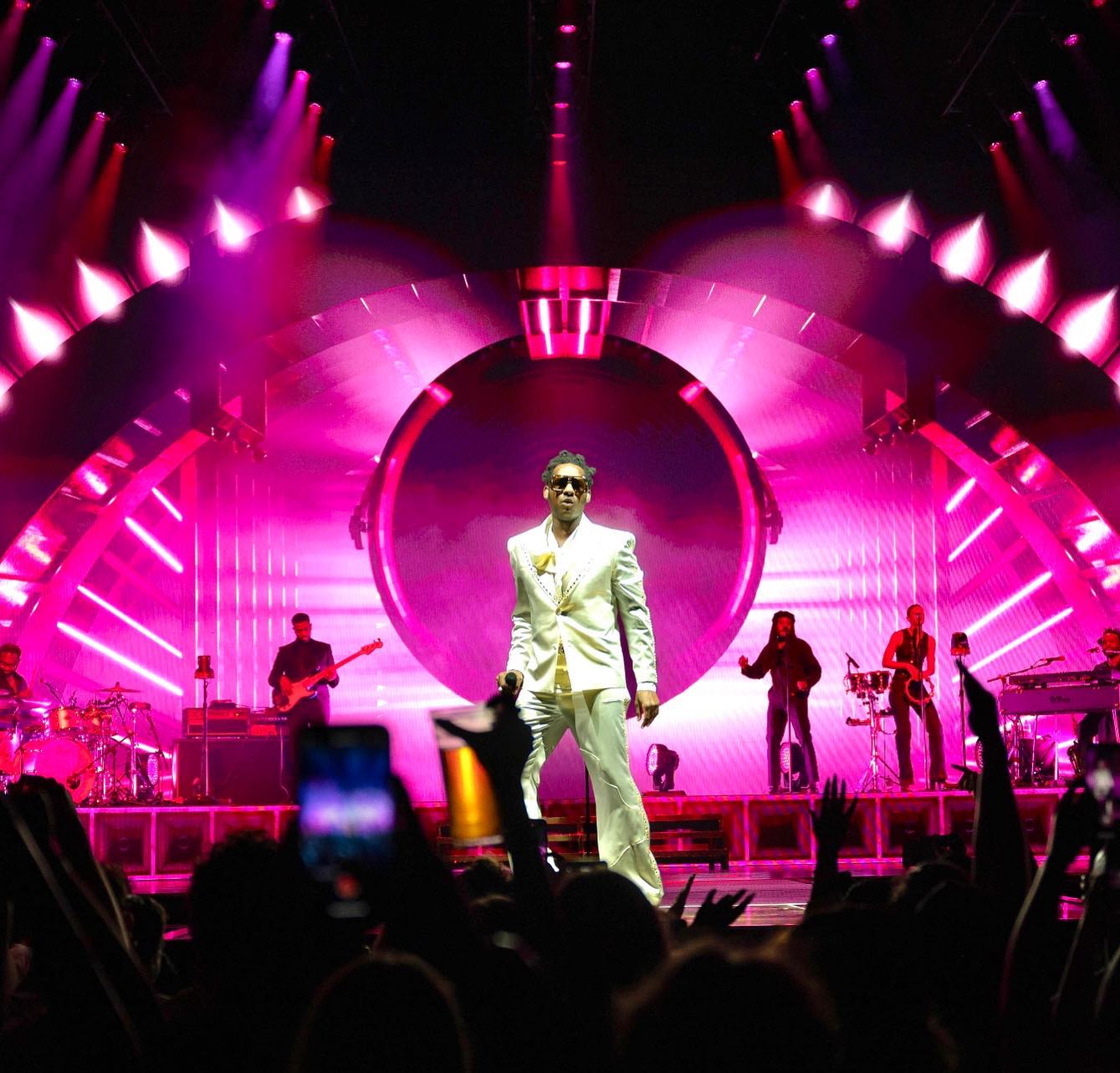
Photo: Michael Ares Photo
You’ve created some captivating shows using AR and AI tools. Looking back to a time before this technology existed, are there any artists from the past who you wish were around today so you could create shows for them using this technology?
“The AR graphics are now at a stage where their blend with existing set pieces and lighting works very well. So, we wish to use it more in the next step in the future. I don’t think that this would have work in the past. The AI tool is a game changer because we can do live keying and be more flexible with the artist positioning on stage. I would not go back with this technology because it forced us to take a unique approach to developing our creative skills and collaboration with all the show department — lighting, staging and video people talking together to make a nice IMAG output.”
Lighting designers who’ve worked with you speak very highly of you as a collaborator. What’s the key to successful collaboration between a production designer like yourself and a lighting designer?
“I started out as a stagehand, then a programmer, a traveling LD, a lighting designer, a stage designer and content director. I did all of this for a various show in theatre, concerts, Cirque, travel, corporate and TV. Therefore, I found out early on that the outcome of a show is based on the synergy of people working together. Fighting for your ideas that push boundaries is good, but you need allies to make it work. So, use other people’ experience to make things work, listening to different ideas so you can think differently and explore new paths. For me as a content director, I put a lot of trust in LDs, as they are the ones who are touring with the artist; they know how the artist is behaving and thinking — and they know the crowd moments.”
Are there any types of lighting fixtures that work best with a blow-through wall?
“If the purpose is to create another layer behind the wall, wash units or linear LED strips that could create a gradient works pretty well — something like a cyc look. If you want to light through the wash, I prefer spots because they have more definition, and the blend with the content works better. LED spots are also better because arc fixtures are too powerful. If they are close to the screen and it can be dangerous for the screen.”
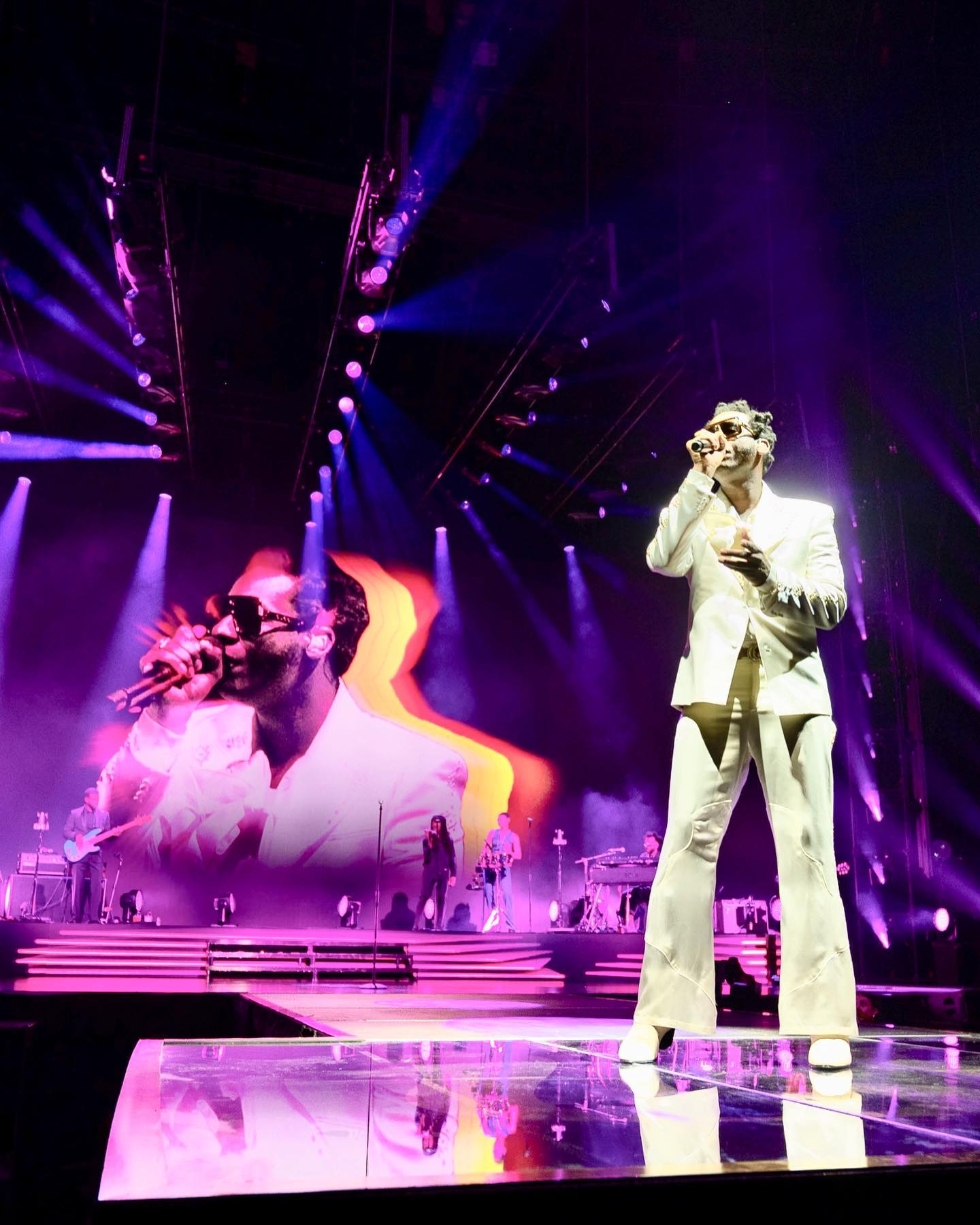
Photo: Michael Ares Photo
Your shows are typically for major stars in arenas or large amphitheaters. Do you envision AR influencing shows in live music clubs or smaller festivals?
“I think it will in a few years. AR is now part of any new cell phone but it’s not frequently used. It will drastically change how we use these devices. For example, Google Maps can be used in 2D on your cell screen but you can film the street you’re on and the AR will juxtapose the screen names in AR on top of your camera. So, it changes the experience. I think that cell phones are so much part of a live concerts now that it’s a matter of time before we integrate creative apps.”
How would you say an AR-centric production changes the nature of lighting design?
“It does because we are pasting a graphic on top of the image, so you need to change your focus position to avoid those graphics . It’s like a magic trick. Plus, now you can add virtual lighting fixtures to your AR world that match your stage lights and give the LD full control. That way, the virtual set pieces are lit with the same angle and colors as the stage lights. It’s a learning curve right now because it’s not tangible.”
How did you personally get involved in AR productions?
“Unreal is the live rendering software use in the video gaming industry. A few years before pandemic, the esports industry started to do live events in which the virtual world and the live word started to come together. We were doing R and D with a broadcaster to create virtual scenic world for some esports event. We also started to use Unreal for some pieces of content. The pandemic arrived in March while we were working on the broadcast show of Canada Day (our 4th July) for July 1st. TV events were happening such as the Lady Gaga with the global broadcast . It was mainly artist in their living room doing FaceTime. That was great, but that was in May, and I thought that for a July show, the audience would be tired of that kind of a FaceTime film.
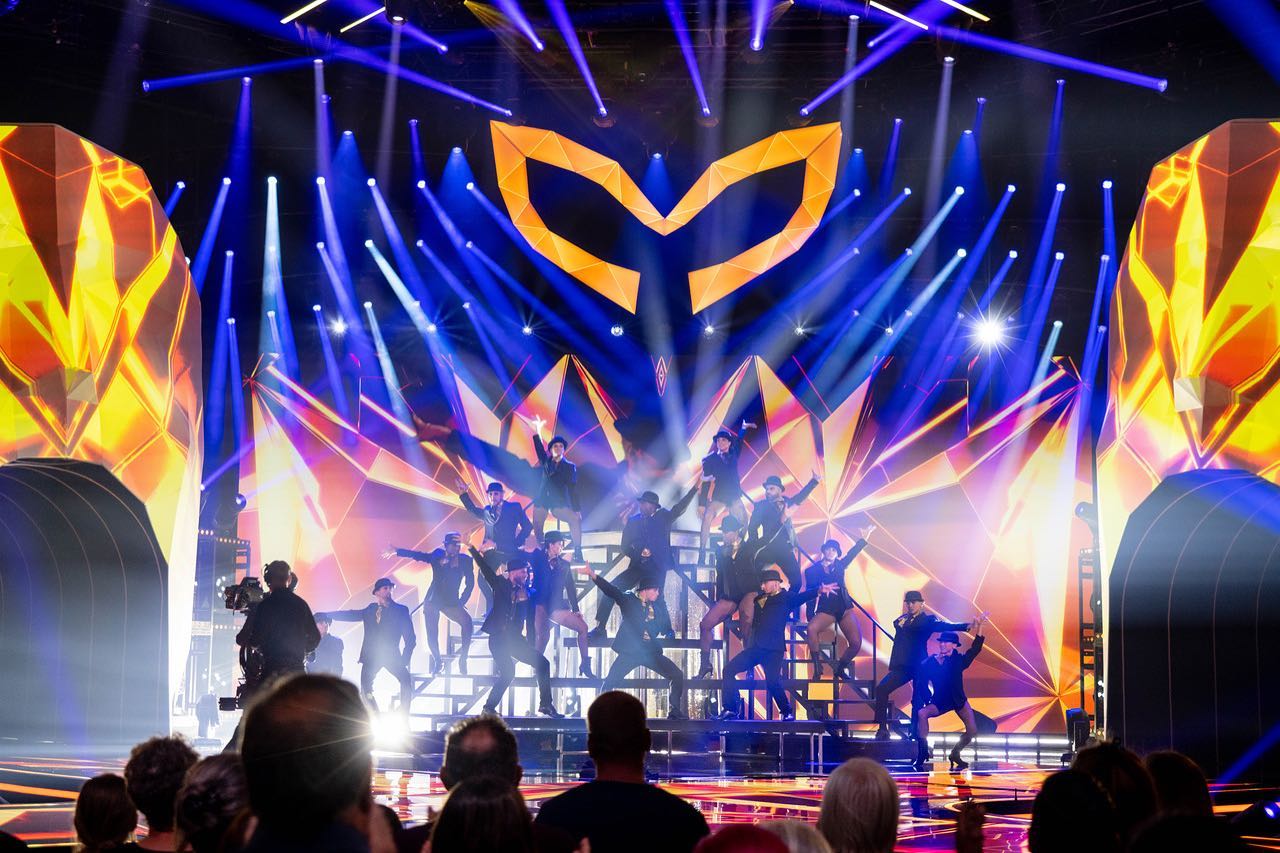
Photo: Bernard Exertier
“This led up to our Canada show was gathering artists from coast to coast in North America, staring in LA with artists like Alanis Morissette and Avril Lavigne. So, we had to find a way to gather everyone and create a different concert experience. This is where it all started. We used our scenic design experience and filmed a bare studio and create virtual set pieces and integrate camera feeds of artist to merge them in the same room , within a décor tailor made for their songs. We had live lighting and virtual lighting that made it cohesive.”
Some of your video screens show lights themselves. Do you envision future shows where most of the “lights” in a show are virtual, rather than the product of fixtures on stage?
“Yes. Using content in a concert is relatively new. It kind of started with servers in the early 2000s so it’s been in constant evolution since then and there are more studios and creator managing this craft and therefore paying attention to the merge with lighting . Adding virtual fixtures within your screen creates so much depth of field and it avoids using too much real fixtures. It’s a good tool to save on truck space, carbon footprint and equipment availability.”
If you encountered someone at a party and they asked you what’ the big difference between the kinds of shows you design and traditional lightshows, what would you tell them?
“That’s a very good question! People who know me for a while are saying that I’m a lighting designer, others are calling me a production designer and for some people, I’m a content director. The truth is that lighting is my background my main tool to define space. For me, video is a lighting source and because of my scenic background, when I create content, its mainly architectural. So, it’s a mix of all of this. So ,the cohesive aspect between all the scenic element is what defines me. I’m a generalist who will make sure that it blends together, if someone is creating lighting, I’ll blend myself and follow this path.”
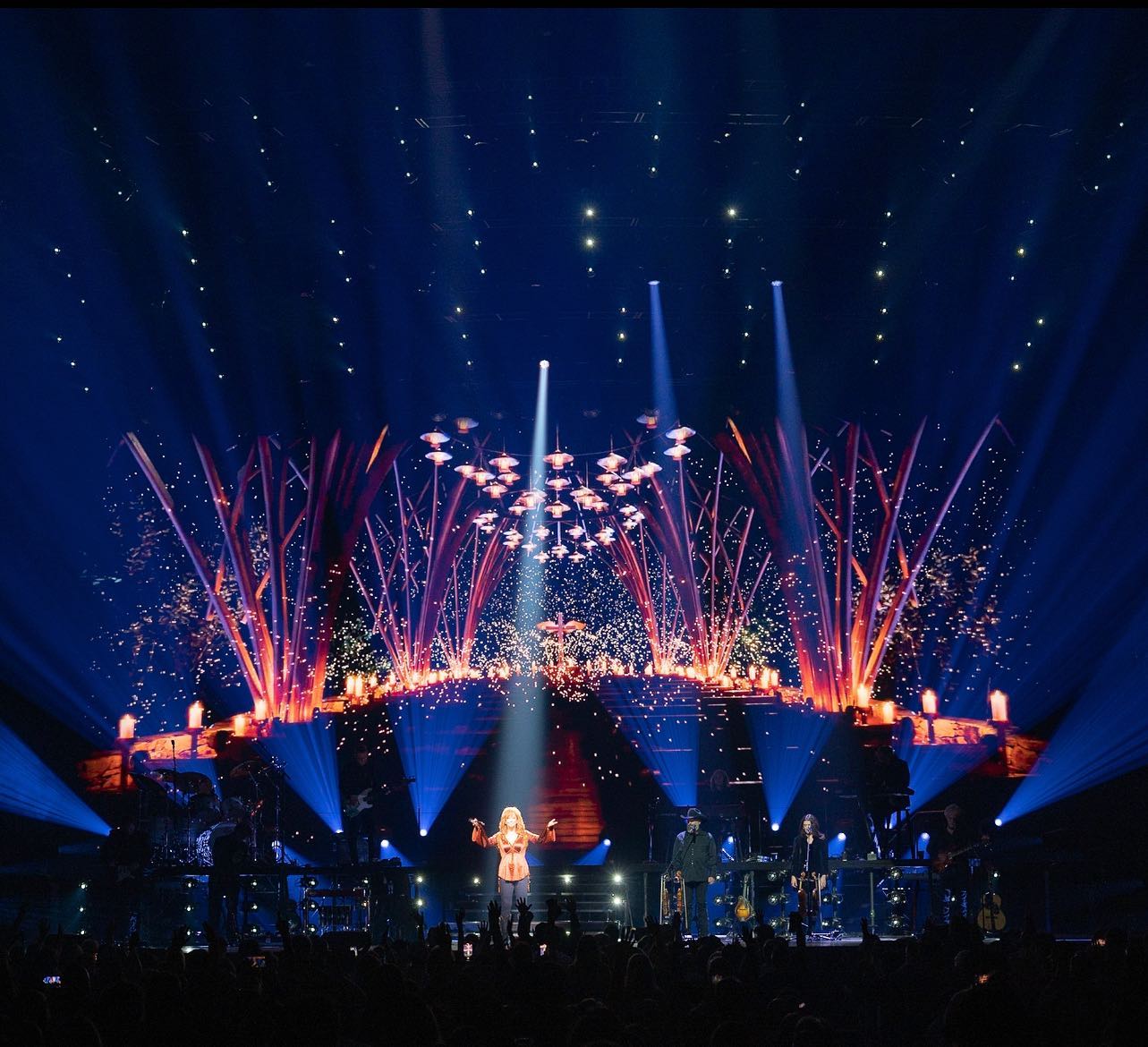
You often incorporate cubic forms in your designs. Why do you like them?
“One of the reasons is that most of the off the shelf products are square. For the sake of the project — touring, transportation, rigging and budget – this is usually the way to go. I also like geometric shapes and for content, I think it is better.”
After you and your team meet with a client and are ready to begin a project, what is the first thing you look at?
“3D plans of the venue, the touring itinerary, and the scale of the project that the client is looking at. With that information, we determine a common denominator and we define our black box in which we can create a footprint.”
How do you get inspired at the start of a project?
“Architecture in general, I get inspired about our client- artists by reading about them, watching how they behave on YouTube, downloading as much information as I can obtain to get my read on them. For me it’s like doing a theater play — you need to do your due diligence and make sure that you are true to the story and era that you’re in. So, for live music, the homework is to listen to the music but check out all the music video, read article to get the state of mind of the artist.”
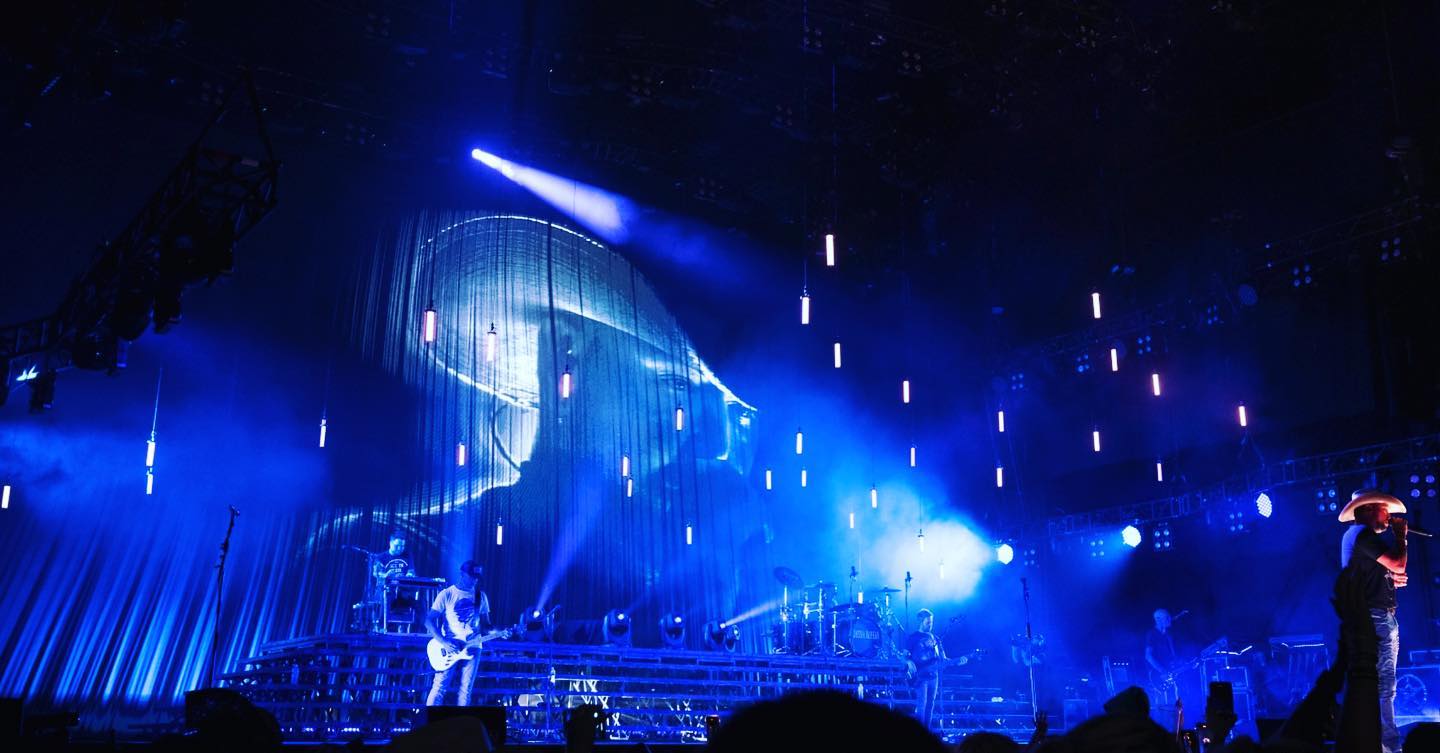
Photo: JP Angers @ Sharyns Studio
Do you ever procrastinate?
“I’m a present tense guy. So, no.”
You’ve incorporated so much new technology into your designs. What’s over the horizon? What technological innovations do you see impacting design?
“We were talking about VR experience earlier; I think that the Metaverse is at the very early stage and that will dictate a lot of the future needs and create a new branch of live entertainment.
“Also, the AI will drastically change things. It will have the same impact that the cell phone and apps have had on us. It’s happening in the graphic world already, but not lighting wise, we’re still very old school , still using DMX and programming with keystrokes but the next generation will be using more tools to help managing lighting and video and FX with more parameters within less time. We started to do that on Jason Aldean where the wall of light was lit and each light is driven like a pixel and there’s a script saying if there’s a content overlap, then close. That’s only the beginning.”
What is the one thing you want people to know about you as a designer?
“That I’m a passionate chap who wants to have a great time with the team.”
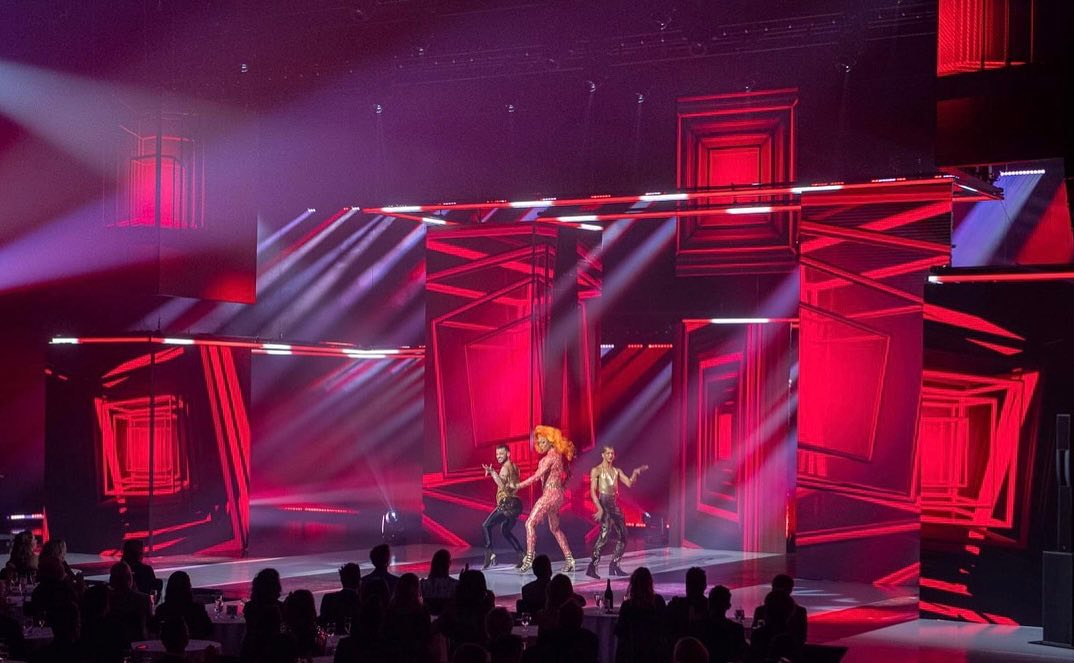
Photo: Claude Dufresne